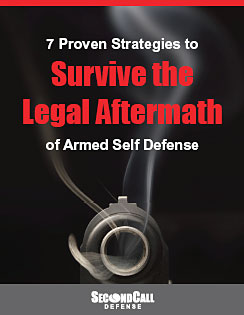Distracting Questions
by Greg Ellifritz
In order for a criminal to get close enough to commit his crime, he has to appear non-threatening. If he appears dangerous, his “prey” are likely to spot him earlier and either run away or call for help. Hence, the criminal will close the distance, often using the pretense of asking a question to appear less threatening.
The same questions seem to get asked over and over again. Criminals use them because they work. Read the story linked below. Here’s one such example of a distracting question used to facilitate the commission of a crime:
Victim In Vicious Assault Speaks Out About The Attack
In this incident, the attacker asked the victim for the time. According to the article:
“Debbie Watkins was out on the Centennial Trail near her home Thursday afternoon, when she walked by a man she didn’t know, who asked her for the time. When she was getting out her phone to answer, he attacked.”
“When I saw him raise his hand, at first I was like this is not happening. I have never had anything like this happen in my life.”
Asking for the time is one of the most common distracting question criminals use. It serves dual purposes. Not only does it provide justification for the attacker to get closer to the victim, it also causes the victim to momentarily look away to check the time. The criminal will use that moment to attack.
In my research, I’ve found two other very commonly used distracting questions. They are:
1) Asking for directions
2) Asking for a cigarette or lighter
Many criminals will use some version of these three questions when targeting an adult victim. Criminals who prey on children tend to ask different questions. They target the child’s desire to help an adult by asking for assistance with something. Questions like “Can you help me find my lost dog” are more commonly used.
The best response to such questions is to say something like “I’m sorry. I can’t help you.” as you quickly walk away. Don’t stay around and debate. Be firm and be ready to escalate both vocally and physically if your response doesn’t cause him to stop his approach.
Your homework assignment this week is to come up with good responses to the three most common distracting questions used by criminals. Once you determine your responses, role play them with a spouse or friend. Have your partner make an approach and ask one of the questions. Make your response and execute your escape plan. It won’t take many repetitions to ingrain these responses into your verbal repertoire.
Greg Ellifritz is the full time firearms and defensive tactics training officer for a central Ohio police department. He holds instructor or master instructor certifications in more than 75 different weapon systems, defensive tactics programs and police specialty areas. For more information or to contact Greg, visit his training site at Active Response Training.
“

